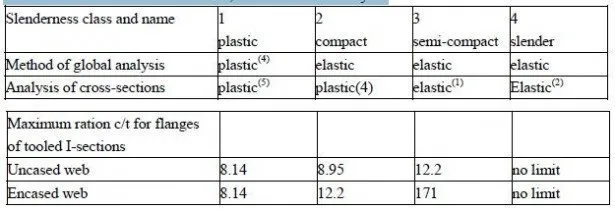We assume first that there is no shear connection or friction on the interface AB. The upper beam
cannot deflect more than the lower one, so each carries load w/2 per unit length as if it were an
isolated beam of second moment of area bh3/12, and the vertical compressive stress across the
interface is w/2b. The midspan bending moment in each beam is wL2/16. By elementary beam
theory, the stress distribution at midspan is as in Fig. 2.2.(c), and the maximum bending stress in
each component, σ , is given by
There is an equal and opposite strain in the top fibre of the lower beam, so that the difference between the strains in these adjacent fibres, known as the slip strain, is x 2ε ,
It is easy to show by experiment with two or more flexible wooden laths or rulers that under load, the end faces of the two-component beam have the shape shown in Fig,2.3(a).The slip at the interface, s, is zero at x = 0 is the only one where plane sections remain plane. The slip strain, defined above, is not the same as slip. In the same way that strain is rate of change of displacement,
slip strain is the rate of change of slip along the beam. Thus from(2.4),

The constant of integration is zero, since s = 0 when x = 0, so that (2.6) gives the distribution of slip along the beam.
Results(2.5)and(2.6)for the beam studied in Section 2.7 are plotted in fig.2.3.This shows that at midspan, slip strain is a maximum and slip is zero, and at the ends of the beam, slip is a maximum and slip strain is zero. From (2.6), the maximum slip (when x = L / 2 )is wL3 / 4Ebh2 .Some idea of the magnitude of this slip is given by relating it to the maximum deflection of the two beams. From (2.3), the ratio of slip to deflection is3.2h / L , The ratio L / 2h for a beam is typically about 20,so that the end slip is less than a tenth of the deflection. We conclude that shear
connection must be very stiff if it is to be effective.



